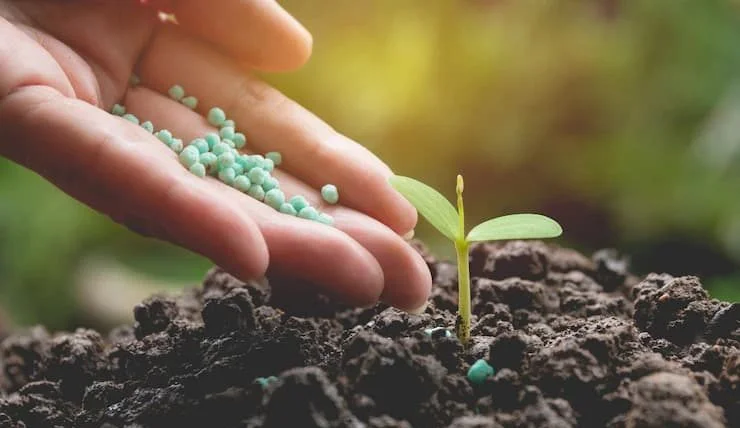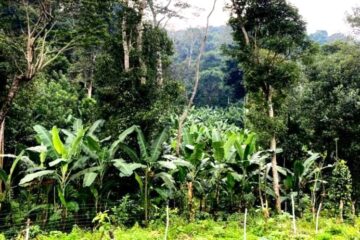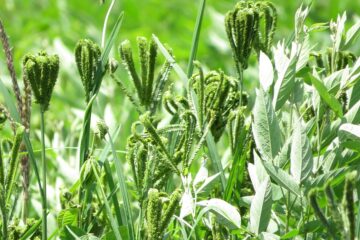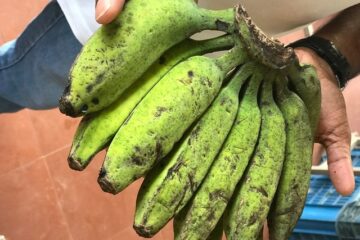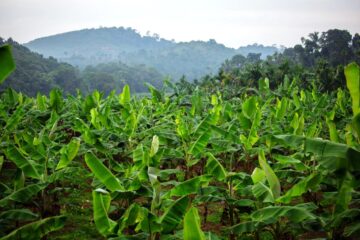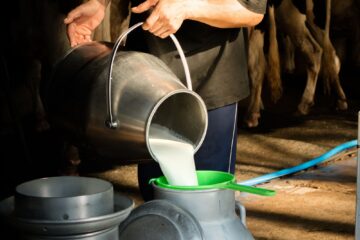A gram of soil on the earth’s surface contains about one hundred thousand microorganisms, while a gram of soil in the deeper layers, particularly in the root zone of crops, contains ten million microorganisms.
Among these microorganisms, there are those that can convert nutrients that crops cannot absorb on their own into easily absorbable forms through their metabolic activities. Specifically, these microorganisms convert nitrogen and phosphorus. Identifying these beneficial microorganisms and preparing fertilizers in artificial growth conditions leads to the creation of biofertilizers.
Biofertilizers are classified into two types: those that stabilize nitrogen and those that dissolve phosphorus for the crops. In leguminous crops, the nitrogen-stabilizing biofertilizer is Rhizobium, while in non-leguminous crops, it is Azospirillum.
Azospirillum
This bacterium helps stabilize atmospheric nitrogen in the soil. It grows both in the presence and absence of oxygen. It is found both inside and outside the root zone of plants, living symbiotically with them.
Azospirillum is attracted to root exudates released by the roots of crops and uses them as food. Additionally, it utilizes the enzyme nitrogenase to convert atmospheric nitrogen into a form that crops can use.
Azospirillum lipoperum biofertilizer should be used exclusively for rice crops. Azospirillum brasilense biofertilizer can be used for all non-leguminous crops except rice.
Rhizobium
In leguminous crops, nitrogen stabilization is performed by Rhizobium. This bacterium forms nodules on the roots of leguminous crops and lives symbiotically. It lives in the soil and is attracted by root exudates from the crops, entering through root hairs to form nodules.
Within these nodules, nitrogenase stabilizes atmospheric nitrogen. This is why leguminous crops are grown in crop rotation systems. There are two types of Rhizobium: one specific for groundnuts and another for all other leguminous crops.
Phosphobacteria
This biofertilizer dissolves phosphorus in the soil, making it available to crops. Phosphorus in the soil undergoes various chemical changes, making it inaccessible to crops. In acidic soils, it binds with iron and aluminum ions to form insoluble phosphates. Similarly, in alkaline soils, it binds with calcium and magnesium to form insoluble phosphates.
Phosphobacteria play a crucial role in these conditions by dissolving these phosphates and making phosphorus available to crops. They secrete organic acids such as fumaric and succinic acids, which dissolve insoluble phosphorus in the soil, making it easily accessible to crops. They also produce the enzyme phosphatase to aid in this process.
Application Methods
- Seed Treatment: Mix the recommended biofertilizer for one acre with the required amount of water and soak the seeds. Dry them in the shade for 30 minutes and sow within 24 hours. Instead of water, cooled rice gruel can be used at a rate of half a liter per packet of biofertilizer.
- Nursery Application: Mix four packets of biofertilizer recommended for one acre with 20 kg of well-decomposed farmyard manure and 10 kg of sand, and apply in the nursery.
- Root Dipping: In a small ridge in the nursery, retain enough water, dissolve four packets of biofertilizer, and soak the roots for at least half an hour before transplanting.
- Field Application: Mix four packets of biofertilizer recommended for one acre with 20 kg of well-decomposed farmyard manure and 10 kg of sand, and apply in the field either before or after sowing or planting.
Azolla
Azolla is a water fern that grows in rice fields. It contains the cyanobacterium Anabaena in its leaf tissues, which fixes nitrogen. Azolla can be used in two ways: grown separately and applied to the field as green manure before planting or grown alongside the rice crop. When grown with rice, it spreads quickly and acts as green manure.
By trampling Azolla during the first weeding, it decomposes within ten days, providing nitrogen. The remaining Azolla regrows within 10-15 days, providing another round of green manure. This method can yield 30-40 kg of nitrogen per hectare, enhancing soil fertility and crop yield.
Benefits of Biofertilizers
- Converts atmospheric nitrogen into nitrogen available to crops.
- Dissolves insoluble phosphorus in the soil, making it available to crops.
- Protects soil fertility.
- Enhances root growth.
- Reduces the need for 25% nitrogen and 20-25% phosphorus fertilizers.
- Lowers the cost and usage of chemical fertilizers.
- Produces plant growth hormones like indole acetic acid, gibberellin, and vitamins like biotin and vitamin B, promoting healthy crop growth.
- Increases seed germination, crop growth, and flowering.
- Provides drought resistance.
- Improves the chemical and physical properties of the soil, leading to a 20-25% increase in yield.
- Acts as biocontrol agents against soil-borne pathogens, enhancing crop disease resistance.
- Environmentally friendly and supports sustainable agriculture.
Precautions
- Do not mix biofertilizers with insecticides or fungicides on treated seeds.
- When treating seeds with biological fungicides, add biofertilizers last.
- Do not mix biofertilizers with chemical fertilizers.
- Use cooled rice gruel for seed treatment.
- Apply biofertilizers when the soil is moist.
- Store biofertilizers away from sunlight, heat, and high humidity.
- Apply organic matter and farmyard manure to the soil to enhance the effectiveness of biofertilizers.
- Mix biofertilizers with farmyard manure before application.
Dr. Raja Ramesh, Assistant Professor, National Legume Research Center, Vamban, Pudukkottai District.

